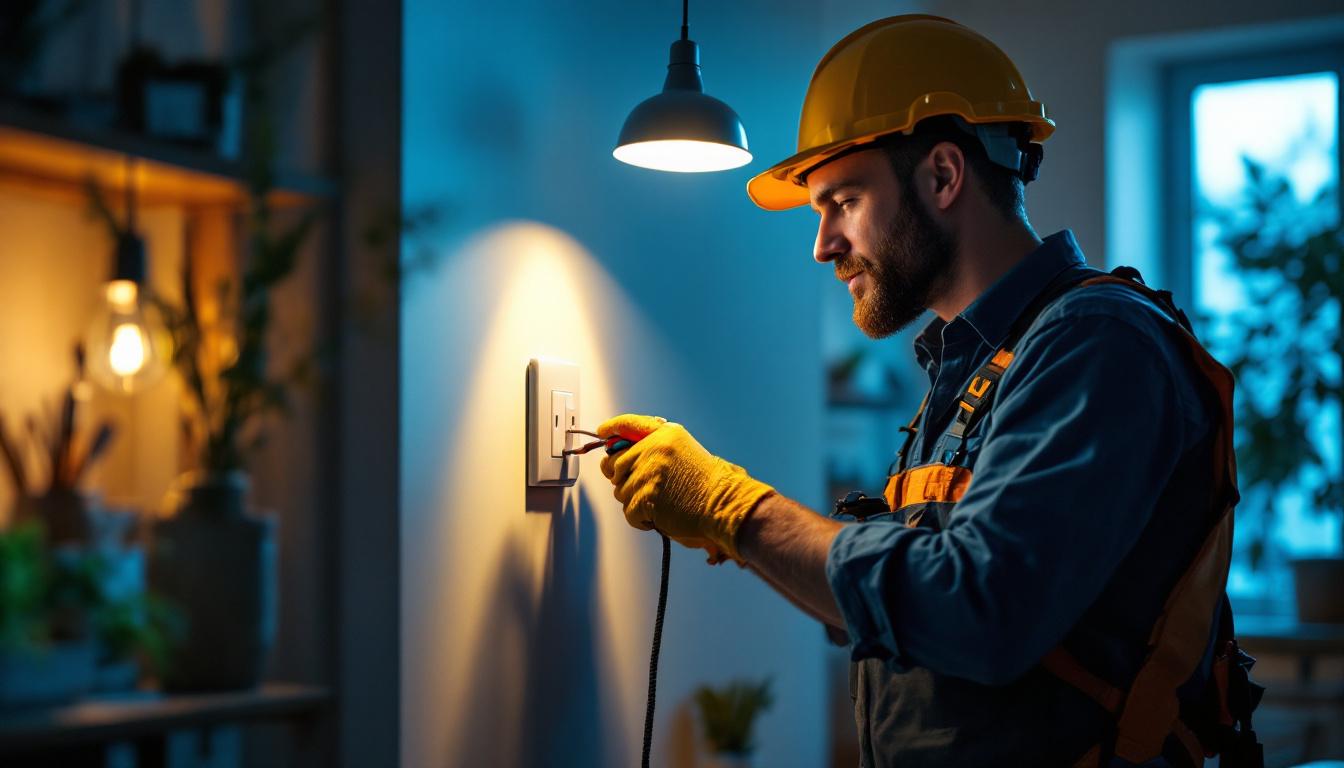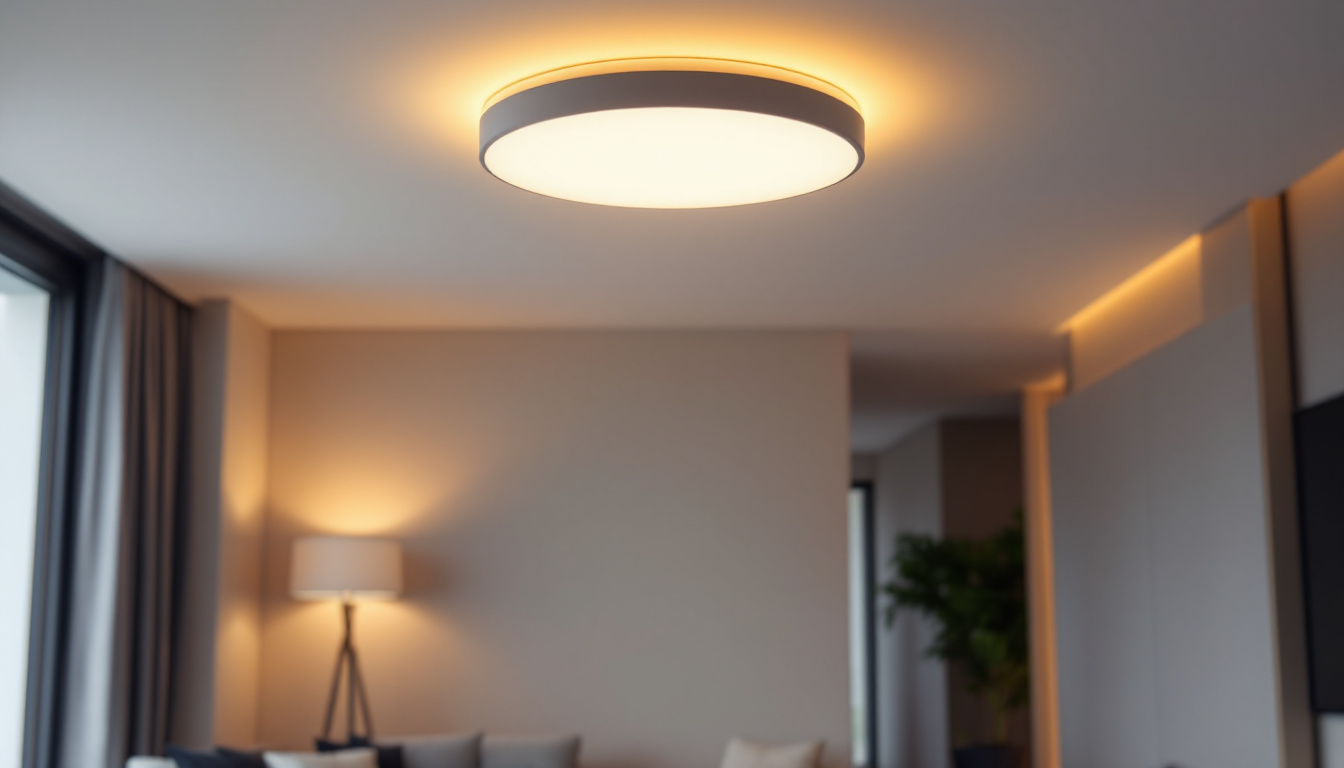
In the world of lighting design and installation, hanging light fixtures play a pivotal role in both aesthetics and functionality. For lighting contractors, understanding the various parts that make up these fixtures is essential. Not only does this knowledge enhance the quality of installations, but it also ensures that clients receive the best possible service. This article delves into the critical components of hanging light fixtures and why they matter in the context of lighting contracting.
Hanging light fixtures are composed of several key parts, each contributing to the overall performance and appearance of the fixture. Understanding these components allows lighting contractors to make informed decisions during installation and maintenance.
The canopy is the part of the hanging fixture that attaches to the ceiling. It serves not only as a decorative element but also as a protective cover for electrical connections. A well-designed canopy can enhance the fixture’s overall look while ensuring safety and compliance with electrical codes.
Contractors should pay attention to the canopy’s size and shape, as these factors can influence how the fixture blends with the surrounding decor. Additionally, ensuring that the canopy is securely mounted is crucial for preventing accidents and ensuring longevity. Canopies can come in various finishes, such as polished chrome, matte black, or antique brass, allowing contractors to match them with the existing decor or create a striking contrast. Furthermore, some canopies are designed with integrated LED drivers, which streamline the installation process and reduce the number of visible components, contributing to a cleaner aesthetic.
The rod or chain is what suspends the light fixture from the ceiling. This component can vary in length, allowing for customization based on ceiling height and design preferences. For contractors, selecting the appropriate length is vital to achieving the desired visual effect and ensuring adequate lighting coverage.
Moreover, the choice between a rod or chain can impact the fixture’s overall style. A rod may offer a more modern aesthetic, while a chain can evoke a vintage or industrial feel. Understanding these nuances helps contractors recommend the best options to their clients. Additionally, some fixtures feature adjustable rods or chains, allowing homeowners to modify the height of the fixture as needed, which is particularly useful in spaces with varying ceiling heights or for accommodating seasonal decor changes. The material of the rod or chain also plays a role in durability and maintenance; for instance, stainless steel chains are resistant to rust and corrosion, making them ideal for kitchens or outdoor settings.
The socket is where the light bulb is installed, and it plays a critical role in the fixture’s functionality. Different types of sockets accommodate various bulb shapes and wattages, which can affect both the brightness and energy efficiency of the lighting solution.
Contractors must be familiar with the different socket types, such as E26, E12, or GU24, to ensure compatibility with the bulbs specified by clients. Additionally, understanding the electrical ratings of sockets is essential for compliance with safety standards. Beyond compatibility, the design of the socket can also influence the overall aesthetic of the fixture. Some modern designs incorporate exposed sockets, showcasing the bulb itself as a design element, while others may feature decorative socket covers that enhance the fixture’s style. Moreover, advancements in smart lighting technology mean that contractors should also be aware of sockets that support smart bulbs, allowing for features such as dimming and color temperature adjustments, which can significantly enhance the user experience and energy efficiency of the lighting system.
The quality of the components used in hanging light fixtures directly impacts their performance and durability. For lighting contractors, choosing high-quality parts can lead to fewer service calls and increased customer satisfaction.
Fixtures made with inferior materials may not withstand the test of time. Components like the canopy, rod, and socket should be crafted from robust materials that resist wear and tear. This is particularly important in high-traffic areas or environments with varying temperatures and humidity levels.
Contractors who prioritize quality components can provide clients with fixtures that not only look great but also last longer, reducing the need for replacements and repairs. This focus on durability can also enhance the contractor’s reputation in the industry.
Safety is paramount when it comes to lighting installations. Using subpar components can lead to electrical hazards, including short circuits or fires. Contractors must ensure that all parts meet safety standards and are compatible with the electrical systems in place.
Incorporating safety features, such as proper insulation in sockets and secure mounting for canopies, can significantly reduce risks. By emphasizing safety, contractors can build trust with their clients and position themselves as experts in the field.
With the growing emphasis on sustainability, energy efficiency has become a crucial consideration for lighting contractors. The choice of components can greatly influence the energy consumption of hanging light fixtures. For instance, selecting LED-compatible sockets can allow for the use of energy-efficient bulbs, which not only reduce electricity costs but also have a longer lifespan.
Contractors who advocate for energy-efficient solutions can help clients save money in the long run while contributing to environmental sustainability. This approach not only enhances the contractor’s value proposition but also aligns with modern consumer preferences.
Hanging light fixtures offer endless possibilities for customization, allowing contractors to tailor solutions to meet the specific needs and tastes of their clients. Understanding the various parts of these fixtures enables contractors to create unique designs that enhance the overall ambiance of a space.
From minimalist to ornate, hanging fixtures come in a variety of designs. Contractors should be well-versed in the different styles available, including industrial, contemporary, and traditional. Each design may require specific components, such as unique canopies or specialized sockets, to achieve the desired look.
By offering a range of design options, contractors can cater to diverse client preferences, making their services more appealing and versatile. This adaptability can also lead to increased referrals and repeat business.
Finishing touches, such as decorative elements and color finishes, can elevate the aesthetic appeal of hanging light fixtures. Contractors should consider how these details interact with the overall design scheme of a space. For example, a brass finish may complement a vintage decor style, while a sleek chrome finish may suit a modern interior.
Attention to these details can significantly enhance the perceived value of the fixture, leading to greater client satisfaction. Contractors who excel in this area can distinguish themselves in a competitive market.
As smart home technology continues to gain traction, many clients are looking for lighting solutions that can integrate seamlessly with their existing systems. Understanding the components that facilitate this integration is crucial for lighting contractors.
For instance, selecting sockets that are compatible with smart bulbs or ensuring that the fixture’s wiring can accommodate smart switches can enhance the functionality of the lighting system. By staying informed about technological advancements, contractors can offer innovative solutions that meet modern demands.
Even the best hanging light fixtures may require maintenance or repairs over time. Understanding the components of these fixtures can help contractors provide effective service when issues arise.
Contractors should be familiar with common problems associated with hanging light fixtures, such as flickering lights, loose connections, or damaged sockets. Knowing how to troubleshoot these issues can save time and enhance customer satisfaction.
For example, flickering lights may indicate a loose connection in the socket or wiring, while a damaged socket may require replacement. By quickly diagnosing these problems, contractors can provide efficient solutions that minimize disruption for clients.
Having access to quality replacement parts is essential for effective maintenance and repair. Contractors should establish relationships with reliable suppliers to ensure they can source the necessary components when needed. This can significantly reduce downtime for clients and enhance the contractor’s reputation for reliability.
Additionally, contractors should educate clients on the importance of regular maintenance checks to identify potential issues before they escalate. This proactive approach can lead to longer-lasting fixtures and increased client satisfaction.
Proper documentation is vital for any installation or repair work. Contractors should maintain records of the components used, including specifications and warranties. This information can be invaluable for future maintenance or if a replacement is needed.
Furthermore, ensuring compliance with local electrical codes and regulations is essential for safety and legality. Contractors should stay informed about any changes in regulations that may affect their work, ensuring that all installations meet the necessary standards.
In the realm of lighting contracting, understanding the various parts of hanging light fixtures is not merely a technical necessity; it is a cornerstone of quality service. From ensuring safety and durability to enhancing aesthetics and energy efficiency, the components of these fixtures play a crucial role in the overall success of lighting projects.
By prioritizing quality, customization, and maintenance, lighting contractors can elevate their services and build lasting relationships with clients. As the lighting industry continues to evolve, staying informed about the latest trends and technologies will further empower contractors to meet the diverse needs of their clientele.
In summary, a comprehensive understanding of hanging light fixture parts is essential for any lighting contractor aiming to excel in their field. By embracing this knowledge, contractors can enhance their expertise, improve client satisfaction, and ultimately contribute to the creation of beautiful and functional spaces.
Ready to elevate your lighting projects with the highest quality hanging light fixture parts? Look no further than LumenWholesale, where we provide lighting contractors with spec-grade lighting products at unbeatable wholesale prices. Our extensive selection is designed to meet the highest industry standards, ensuring you deliver reliable and high-performance lighting solutions to your clients. Plus, with free shipping on bulk orders, you can enjoy the best value without any hidden fees. Don’t compromise on quality or affordability. Wholesale Lighting at the Best Value is just a click away. Experience the LumenWholesale difference today!

Discover the essential strategies lighting contractors use with light plug covers to enhance safety and aesthetics.

Discover expert insights with our guide on ceiling fan lighting. Learn quick tips from lighting contractors to enhance your home’s ambiance and functionality.

Discover how partnering with No Eight Lighting’s expert contractors can illuminate your business success.

Discover how LED ceiling lights flush mount designs are revolutionizing the lighting industry with their energy efficiency, sleek aesthetics, and versatile applications.